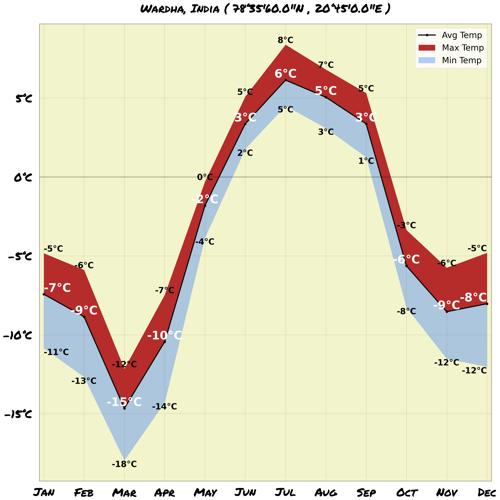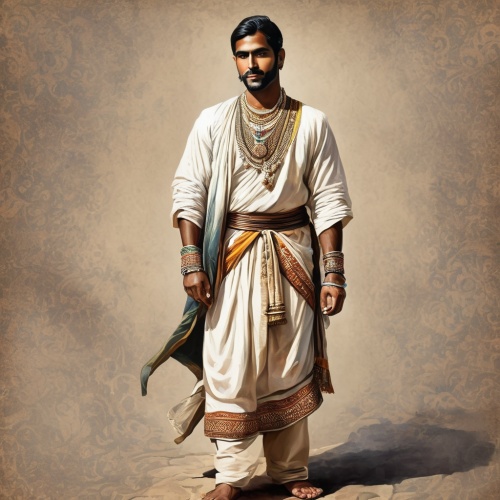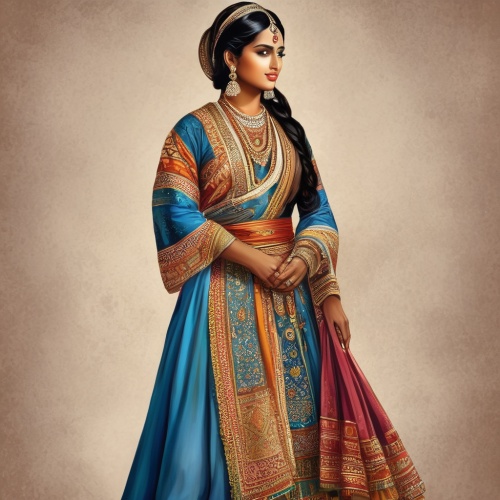Understand
The history of Wardha District is shrouded in mystery, with little known about its early origins. However, we do know that as far back as the 2nd century B.C., the river Wardha was mentioned. The District was part of the Hindu Kingdom of Berar, ruled by the King of Vidarbha. Later, Berar was divided between the King of Vidarbha and his cousin Madhavansena, with each ruling on one side of the Wardha river. During the Chalukya and Radhtrakuta dynasties, Wardha was likely a part of the larger Berar region. Copper-plate grants from this time have been discovered in Multai and Deoli, providing insight into the history of the region. The Bahmani Kingdom, founded in 1351, later included Wardha in its territory. The Bahmani kingdom was an independent principality near Solapur and Bidar. The Imad Shahi dynasty ruled over Berar for a period after the collapse of the Bahmani dynasty. In 1572, the Ellichpur kingdom, which had a separate existence for ninety years, was conquered by the king of Ahmadnagar. Berar was subsequently ceded to the Mughal Empire under the rule of Emperor Akbar. In 1822, the Bhonsla kingdom received the tract west of the Wardha, while the forts of Gawilgarh and Narnala were retroceded to the Nizam. In 1862, under British rule, Wardha became a separate charge due to the cotton industry in the Wardha valley requiring special supervision. The District headquarters were established in Kaotha, later relocating to the town of Wardha.
Map & Climate
Popular Foods
 Dish: Butter Chicken (Murgh Makhani)Butter chicken is a rich and creamy curry made with marinated chicken pieces cooked in a tomato-based sauce. The dish originated in the Indian subcontinent and gained popularity in Canada due to the large population of Indian immigrants. It's typically served with basmati rice and naan bread. Butter chicken contains meat – chicken.
Dish: Butter Chicken (Murgh Makhani)Butter chicken is a rich and creamy curry made with marinated chicken pieces cooked in a tomato-based sauce. The dish originated in the Indian subcontinent and gained popularity in Canada due to the large population of Indian immigrants. It's typically served with basmati rice and naan bread. Butter chicken contains meat – chicken.  Dish: BiryaniBiryani is a popular rice dish made by cooking Basmati rice with meat (usually chicken, goat, or fish), vegetables, yogurt, and a blend of spices. It originates from the Indian subcontinent and is often considered the national dish of Pakistan. It's known for its flavorful layers and distinct aroma. Biryani contains meat – primarily chicken, goat, or fish.
Dish: BiryaniBiryani is a popular rice dish made by cooking Basmati rice with meat (usually chicken, goat, or fish), vegetables, yogurt, and a blend of spices. It originates from the Indian subcontinent and is often considered the national dish of Pakistan. It's known for its flavorful layers and distinct aroma. Biryani contains meat – primarily chicken, goat, or fish.  Dish: SamosasSamosas are deep-fried or baked pastry snacks filled with a savory mixture of spiced potatoes, onions, peas, and sometimes meat. They originate from South Asia and have become a popular street food across India. Often served as an appetizer or a quick snack, samosas can be found at roadside stalls, train stations, and even weddings. Samosas can contain meat – typically potatoes, onions, and peas, but some varieties may include meat such as chicken or lamb.
Dish: SamosasSamosas are deep-fried or baked pastry snacks filled with a savory mixture of spiced potatoes, onions, peas, and sometimes meat. They originate from South Asia and have become a popular street food across India. Often served as an appetizer or a quick snack, samosas can be found at roadside stalls, train stations, and even weddings. Samosas can contain meat – typically potatoes, onions, and peas, but some varieties may include meat such as chicken or lamb. 




Comments
NO COMMENTS